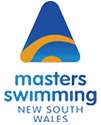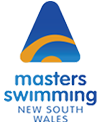
Shoulder Pain – What are the Risk Factors in Masters Swimmers?
Shoulder Pain – What are the Risk Factors in Masters Swimmers?
Peter Reaburn PhD
Introduction
Many years ago when I was a 35 year old young buck, I had a conversation with a couple of Miami Masters legends, John Crisp and Geoff Ross. Both were well into their 50’s and to me were ‘old’. They were hard and consistent trainers who’d been swimming competitively in surf and mastersswimming since before I was born.
The chat was about swimmer’s shoulder. To highlight how bad they can be, Geoff pulled a plastic bottle out of his coat pocket and showed us some bone fragment that had been chopped off one his shoulders. He warned me to look after the shoulders or end up having an operation just like him. That op forced him out of the water for a few months then many more months of rehab to get his shoulders back to being able to handle the grind of training and competing again.
So what are the risk factors associated with shoulder pain in swimmers. Some recent research that included swimmers young and old examined the physical characteristics and training variables that can lead to shoulder pain or disability.
The Research
This American study examined differences between swimmers with and without shoulder pain. The researchers had 236 competitive female swimmers between the ages 8 and 77 years of age complete the Penn Shoulder Score test (a test of shoulder pain and discomfort) with the Sports/Performing Arts Module plus a range of other physical tests including core endurance (how long the swimmers could hold a side bridge), range of motion (flexibility) around the shoulder tests, range of shoulder muscle strength tests, muscle (pectoralis minor) length tests, and scapular motion tests. Height, weight, years of swimming, hours of swim training per week, prior shoulder injuries and involvement in other sports were also surveyed.
The swimmers were grouped into four groups:
- 8-11 years (n=42)
- 12-14 years (n=43)
- 15-19 years (n=84) (High school swimmers)
- 23-77 years (n=67) (Masters swimmers)
And the age groups compared and contrasted using various statistical methods.
The Results
Nine (21.4%) swimmers aged 8 to 11 years, 8 (18.6%) swimmers aged 12 to 14 years, 19 (22.6%) high school swimmers, and 13 (19.4%) masters swimmers had shoulder pain and disability. High school swimmers were the most symptomatic. Differences that were found in 2 or more age groups between athletes with and without shoulder pain and disability included greater number of years of training and number of swim training hours per week, a higher incidence of previous traumatic injury and patient-rated shoulder instability, and reduced participation in another sport (cross- training) in the symptomatic groups. Reduced shoulder flexion motion, weakness of the middle
trapezius muscle and internal rotation, shorter pectoralis minor and latissimus muscle, participation in water polo, and decreased core endurance were found in symptomatic females in individual age groups including the masters swimmers. Breathing pattern, stroke preferences or use of paddles did not have any influence on shoulder pain or disability in the masters swimmers. Previous shoulder damage such as dislocation or fracture was related to shoulder pain in the masters swimmers.
So What?
The results of this study strongly support the need for stretching of the chest and posterior shoulder muscles, strengthening of all the muscles of the shoulder joint, and development of the core abdominal muscle strength and endurance.
The results also highlight that masters swimmers should get along to a sports physiotherapist and get screened if they have any history of prior shoulder injuries, are experiencing shoulder pain, or feel any instability in their shoulders.
Chapter 12 (Injury prevention and management for the masters athlete) of my book The Masters Athlete details the key principles of injury prevention and treatment while Chapter 7 (Strength and power training for the masters athlete) and Chapter 9 (Developing flexibility in masters athletes) present what science says are the ways to develop these qualities in masters swimmers.
Better to be safe than sorry when it comes to being able to swim for life.
Source: Tate, A. and others (2012). Risk factors associated with shoulder pain and disability across the lifespan of competitive swimmers. Journal of Athletic Training, 47(2): 149-158.
Peter Reaburn is an Associate Professor in exercise and sport science at CQUniversity. He has recently written the definitive book for masters athletes titled The Masters Athlete now in its second reprint and available hardcopy or in pdf format with individual chapters also available in pdf at:www.mastersathlete.com.au. Peter was the founder of Miami Masters in Queensland, Chair of the 1990 National Swim Organising Committee, spent two years as State President of AUSSI Queensland and 10 years on the National Coaching Panel. He has won national distance swimming championships and was world-ranked in 1500m freestyle as a younger master swimmer. He still swims open water and was winner of the Australian Ironman Triathlon (50-54 years) in 2005.

